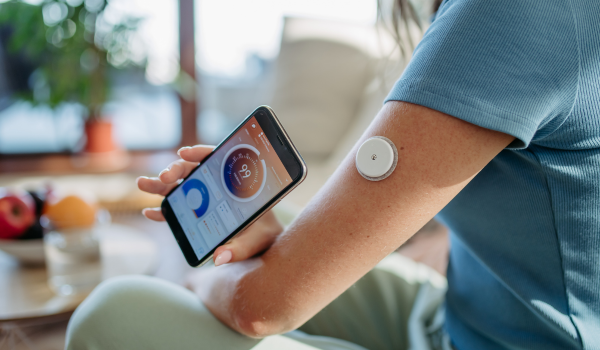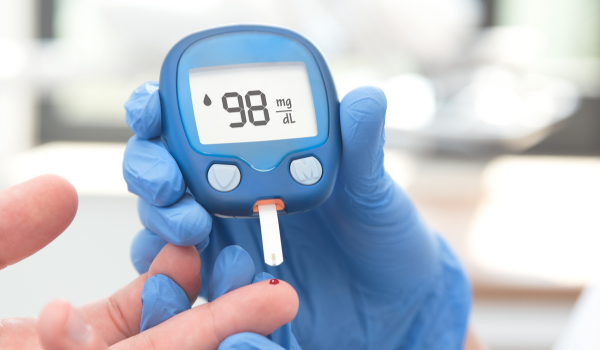
Why Complications Happen
Type 1 diabetes develops when the pancreas no longer produces insulin, forcing people to depend on external insulin therapy. While insulin allows for blood sugar control, maintaining near-normal levels every day is difficult. Over time, fluctuations in blood sugar damage blood vessels, nerves, and organs, leading to long-term complications.
The risk is not immediate but accumulates over years. The higher and more prolonged the blood sugar, the greater the likelihood of complications. Prevention depends on consistent management, regular checkups, and lifestyle choices that protect organs.
Eye Damage
High blood sugar can damage the tiny blood vessels in the retina, leading to diabetic retinopathy. Early stages may cause blurred vision, while advanced stages can result in vision loss or blindness. People with type 1 diabetes are also at higher risk for cataracts and glaucoma.
Prevention strategies:
-
Get annual dilated eye exams.
-
Maintain good blood sugar and blood pressure control.
-
Avoid smoking, which accelerates vessel damage.
-
Seek treatment early if vision changes occur.
With regular monitoring and timely treatment, vision loss can often be prevented.
Kidney Disease
The kidneys filter waste from the blood, but chronic high glucose damages their delicate structures. This leads to diabetic nephropathy, which can progress to kidney failure requiring dialysis or transplant.
Prevention strategies:
-
Annual urine and blood tests to detect early changes.
-
Control blood sugar and blood pressure.
-
Limit excess protein and salt in the diet if recommended.
-
Avoid smoking and maintain hydration.
Early detection is vital, as kidney disease often shows no symptoms until it is advanced.
Nerve Damage
Nerve damage, or diabetic neuropathy, is another long-term risk. High blood sugar interferes with nerve signaling and restricts blood supply to nerves.
Symptoms include tingling, numbness, burning pain, and muscle weakness, often starting in the feet and hands. Autonomic nerves can also be affected, leading to digestive issues, bladder problems, or sexual dysfunction.
Prevention strategies:
-
Consistent glucose monitoring and control.
-
Regular foot exams and protective footwear.
-
Early treatment of pain or numbness.
-
Physical activity to improve circulation.
Neuropathy is common but manageable with proactive care.
Heart Disease
Cardiovascular disease is the leading cause of death in people with type 1 diabetes. Damage to large blood vessels increases the risk of heart attack, stroke, and peripheral artery disease.
Prevention strategies:
-
Keep blood sugar, cholesterol, and blood pressure in range.
-
Eat a heart-healthy diet rich in whole grains, vegetables, and healthy fats.
-
Exercise regularly to strengthen the heart.
-
Avoid smoking and limit alcohol.
Heart disease risk begins earlier in type 1 diabetes, making preventive care essential from a young age.
Foot Problems
Nerve damage and poor circulation combine to make the feet especially vulnerable. Cuts or blisters may go unnoticed, leading to infections and ulcers. Severe cases can result in amputation.
Prevention strategies:
-
Daily self-checks for cuts, redness, or swelling.
-
Proper footwear to prevent injuries.
-
Regular podiatry visits.
-
Prompt treatment of infections.
Foot care is one of the most important daily practices for long-term diabetes management.
Skin Issues
Chronic high blood sugar makes the skin more prone to infections and slower healing. People with type 1 diabetes may also experience fungal infections, bacterial infections, and dry, itchy skin.
Prevention strategies:
-
Keep skin clean and moisturized.
-
Treat cuts and scrapes immediately.
-
Maintain hydration.
-
Monitor for recurring rashes or infections.
Healthy skin care reduces discomfort and prevents more serious complications.
Bone and Joint Problems
Diabetes can weaken bones and joints over time, increasing the risk of osteoporosis and arthritis-like conditions. Poor circulation and nerve damage may contribute to these changes.
Prevention strategies:
-
Engage in weight-bearing exercise.
-
Ensure adequate calcium and vitamin D intake.
-
Avoid smoking and excessive alcohol.
-
Get bone density screenings if at risk.
Strong bones and joints support long-term mobility and independence.
Mental Health Effects
Living with type 1 diabetes long-term can affect mental health. The constant attention required for monitoring and treatment may lead to diabetes distress, anxiety, and depression.
Prevention strategies:
-
Seek professional counseling or therapy when needed.
-
Join peer support groups for shared experiences.
-
Practice stress-reducing activities like meditation or yoga.
-
Communicate openly with family and healthcare teams.
Emotional well-being is just as important as physical health in preventing burnout and complications.
Pregnancy Risks
Women with type 1 diabetes face unique challenges during pregnancy. Poor blood sugar control increases risks of complications such as preeclampsia, premature delivery, and birth defects.
Prevention strategies:
-
Work with a diabetes care team before and during pregnancy.
-
Maintain tight glucose control.
-
Monitor frequently to adjust insulin needs.
-
Follow nutrition and lifestyle guidance for maternal and fetal health.
With careful planning, many women with type 1 diabetes have healthy pregnancies.
Oral Health
Diabetes increases the risk of gum disease, tooth decay, and dry mouth. High blood sugar encourages bacterial growth, which accelerates oral health problems.
Prevention strategies:
-
Brush and floss daily.
-
Visit the dentist at least twice a year.
-
Keep blood sugar well controlled.
-
Avoid smoking, which worsens gum disease.
Good oral hygiene helps prevent infections and contributes to overall health.
Prevention Habits
While complications are serious, they are not inevitable. Consistent habits significantly reduce risks:
-
Monitor blood sugar regularly.
-
Take insulin as prescribed.
-
Stay active and eat a balanced diet.
-
Keep medical appointments for screenings and early detection.
-
Manage stress and mental health proactively.
These daily practices create a protective shield against long-term complications.
Technology and Prevention
Modern tools make prevention more effective. Continuous glucose monitors (CGMs), insulin pumps, and smart apps allow for tighter control and easier adjustments. Early adoption of technology helps reduce complications and improves quality of life.
Future developments, such as artificial pancreas systems and regenerative therapies, bring hope for even greater prevention in the years ahead.
The Bottom Line
Long-term complications of type 1 diabetes can affect nearly every organ in the body—from eyes and kidneys to nerves and heart. But with consistent care, early detection, and preventive strategies, most of these complications can be delayed or avoided.
Managing type 1 diabetes is a daily commitment, but one that pays off in long-term health, independence, and quality of life. Prevention is not just about living longer—it’s about living better.








.png)













